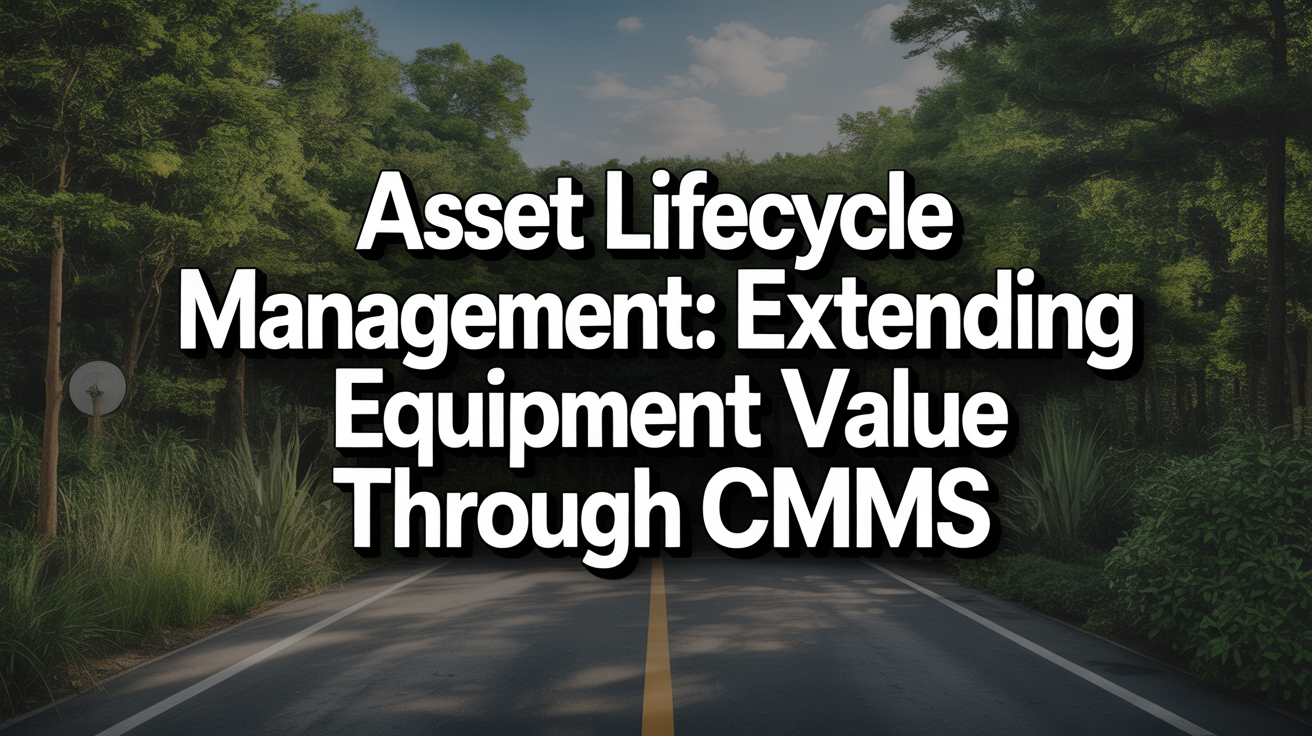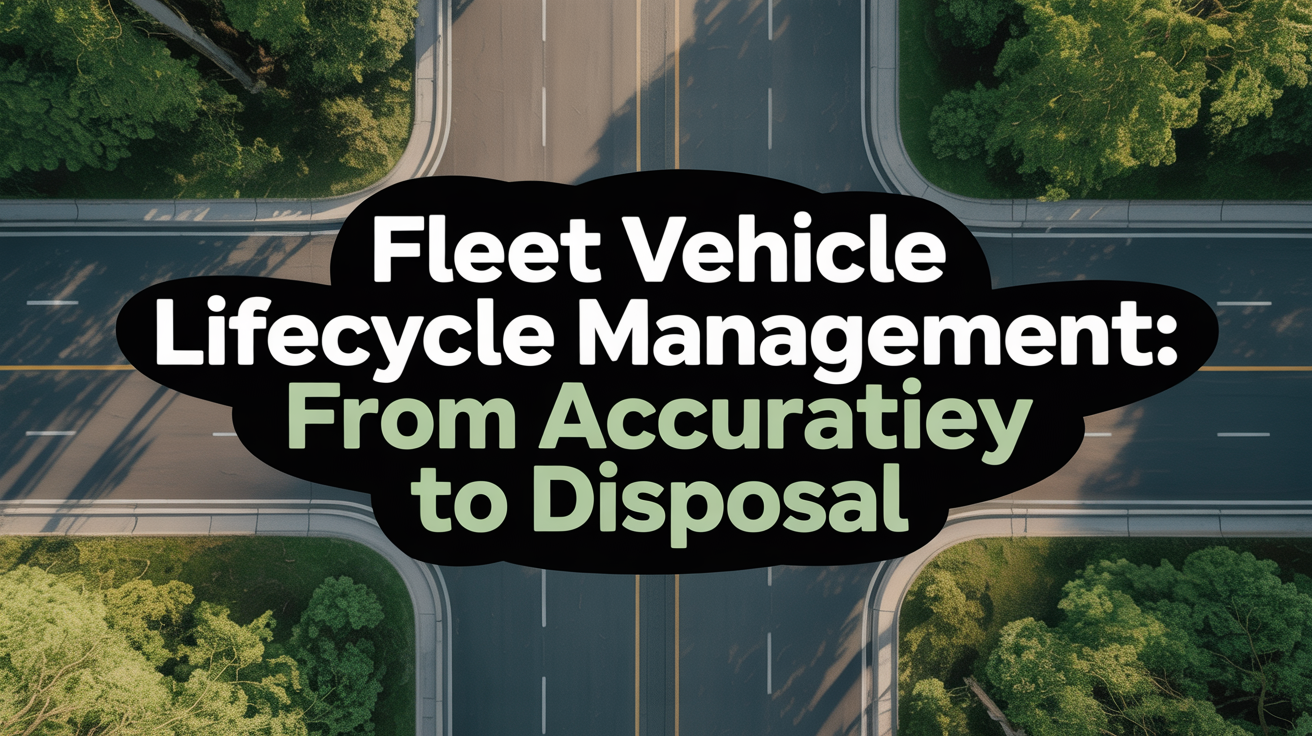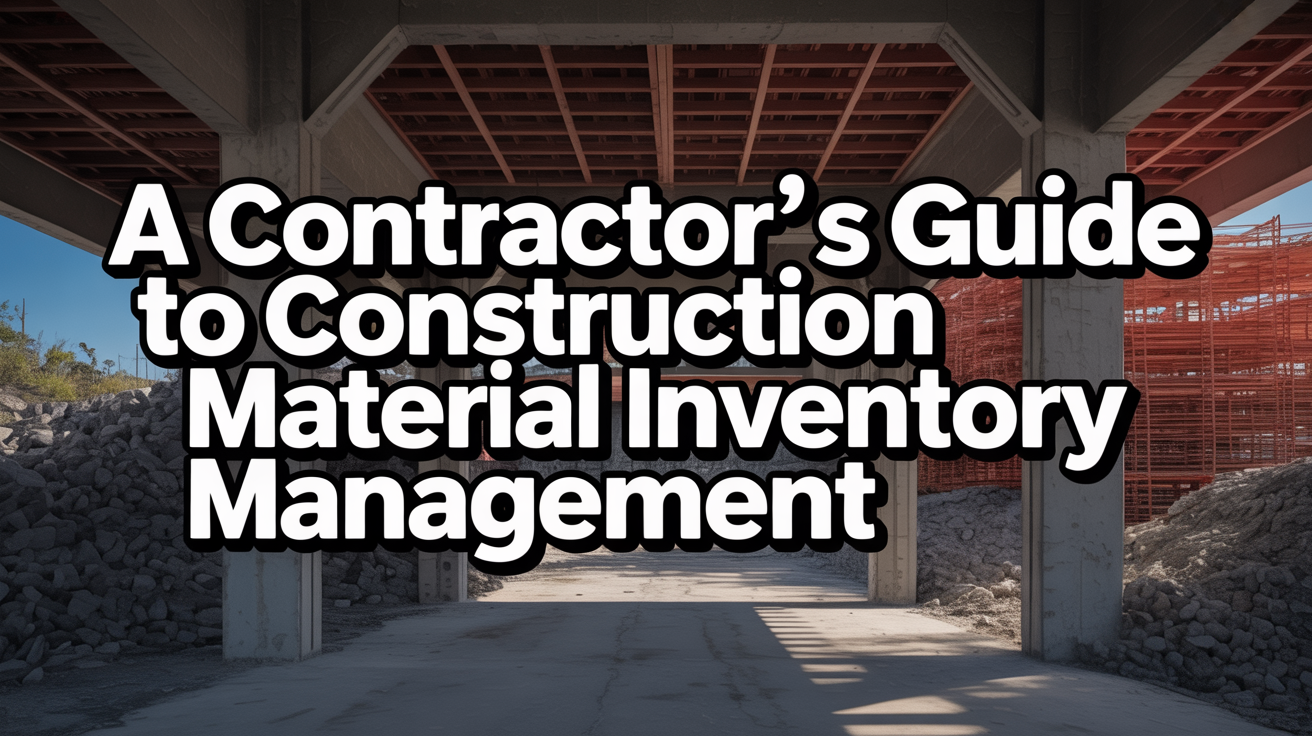Asset Lifecycle Management: Extending Equipment Value Through CMMS
Introduction
Asset lifecycle management is quickly becoming a cornerstone of operational efficiency in industries ranging from manufacturing to healthcare. This process involves tracking and optimizing assets throughout their entire lifespan, ensuring they deliver maximum value while minimizing costs. With the rise of digital technologies, businesses are now equipped with tools to make smarter decisions about their equipment, leading to better performance and longer lifespans. 🚀
At the heart of this transformation is the Computerized Maintenance Management System (CMMS), which has emerged as an essential tool for organizations looking to maximize asset value. By providing real-time data, automating workflows, and enabling predictive maintenance, a CMMS empowers businesses to extend the life of their equipment and reduce unnecessary expenses. Let’s dive deeper into how these systems work and why they’re so critical today.
Understanding Asset Lifecycle Management: Key Concepts
Asset lifecycle management refers to the systematic approach of managing physical assets from acquisition to disposal. Its primary objectives include maximizing value, optimizing performance, and controlling costs over the asset’s useful life. By implementing ALM strategies, companies can ensure that every piece of equipment operates at peak efficiency while avoiding unnecessary expenditures. This structured approach helps businesses plan smarter and act faster when issues arise. 💡
Without proper asset management, organizations often face challenges like frequent breakdowns, inflated repair costs, and unexpected downtime. These problems not only disrupt operations but also strain budgets and erode profitability. Transitioning to a proactive model through ALM allows teams to anticipate issues before they escalate, creating a smoother workflow and happier stakeholders.
The Main Stages of the Asset Lifecycle
The asset lifecycle consists of five key stages: planning, acquisition, utilization, maintenance, and disposal. Each stage plays a crucial role in determining the overall value and longevity of an asset. For example, during the planning phase, businesses decide on the type of equipment needed and its expected ROI. Similarly, during acquisition, careful selection ensures cost-effectiveness and compatibility with existing systems. 📊
As assets move into the utilization and maintenance phases, regular upkeep becomes vital to preserving their condition and functionality. Finally, the disposal stage requires thoughtful consideration to minimize environmental impact and recover residual value. Understanding these stages enables organizations to make informed decisions that enhance both short-term efficiency and long-term sustainability. Moving forward, we’ll explore how technology supports each of these phases seamlessly.
Tracking these stages using modern tools provides unparalleled visibility into asset performance, helping managers allocate resources wisely and optimize outcomes across the board. The right software can turn complex lifecycle data into actionable insights, driving smarter strategies at every step.
CMMS: The Digital Backbone of Modern ALM
A Computerized Maintenance Management System (CMMS) serves as the backbone of modern asset lifecycle management by centralizing data and streamlining processes. Core functions of a CMMS include work order management, preventive maintenance scheduling, inventory control, and reporting. These features enable teams to monitor assets in real time, ensuring no detail goes unnoticed. 🔧
“Asset lifecycle management represents a systematic approach to maximizing the value of organizational assets throughout their useful life. This comprehensive process tracks physical assets from initial planning through disposal, providing maintenance professionals with strategies to extend asset lifespan, reduce downtime, and optimize total cost of ownership.” -MaintainX
More organizations are turning to CMMS platforms like Nektar.io because they offer centralized, real-time asset tracking that eliminates guesswork and manual errors. With all information stored in one accessible location, teams can collaborate more effectively and respond quickly to potential issues. This level of precision is revolutionizing how businesses manage their most valuable resources.
How CMMS Supports Every Asset Lifecycle Stage
During the planning and acquisition stages, a CMMS provides historical performance data, cost analysis, and usage trends to guide purchasing decisions. This ensures that investments align with organizational goals and budget constraints. Additionally, having access to past records helps identify patterns that inform smarter choices moving forward. 🧮
“Asset lifecycle management is the management of asset health & productivity across five stages: planning, acquisition, utilization, maintenance, and disposal.” -eMaint
In the utilization and maintenance phases, a CMMS shines by automating preventive maintenance schedules and enabling predictive strategies. By analyzing sensor data and usage metrics, it predicts potential failures before they occur, reducing downtime significantly. When it comes to disposal, the system tracks total cost of ownership and lifecycle analytics, allowing managers to determine the best time to retire or replace assets. This comprehensive support makes CMMS indispensable for modern ALM practices.
By integrating seamlessly across all stages, a CMMS transforms disjointed processes into a cohesive strategy. It bridges gaps between departments and ensures everyone works toward the same objectives, ultimately extending equipment value and improving operational resilience.
“A computerized maintenance management system, or CMMS, is a type of asset management software that maintains a database of an organization’s maintenance operations and helps extend the asset lifespan.” -IBM
Benefits of Integrating CMMS with Asset Lifecycle Management
Integrating a CMMS with asset lifecycle management delivers measurable benefits such as reduced maintenance costs, minimized downtime, extended asset life, and improved regulatory compliance. Organizations leveraging these systems report significant savings in both time and money, thanks to streamlined workflows and enhanced visibility. Plus, automated reporting simplifies audits and ensures adherence to industry standards. ✅
Data-driven insights generated by a CMMS translate directly into better decision-making and higher ROI. Managers can identify inefficiencies, allocate resources strategically, and implement changes that drive continuous improvement. This proactive approach not only boosts productivity but also positions businesses for sustained success in competitive markets.
“A customizable CMMS software gives businesses a critical edge in all stages of asset lifecycle management.” -LimbleCMMS
Preventive and Predictive Maintenance: Extending Equipment Value
Preventive and predictive maintenance are two powerful strategies for prolonging equipment life and reducing costs. Preventive maintenance involves scheduled inspections and routine servicing to catch minor issues early, while predictive maintenance uses advanced analytics to forecast potential failures based on real-time data. Both approaches aim to prevent costly breakdowns and keep assets running smoothly. ⚙️
A CMMS facilitates this shift from reactive to proactive asset management by providing the tools needed to execute these strategies effectively. Automated alerts, detailed reports, and integrated sensors empower teams to stay ahead of problems, ensuring equipment remains reliable and efficient. This transition not only extends asset value but also enhances overall operational stability.
“The benefits of a good asset life cycle management program include: Developing a data-driven maintenance strategy… Increased productivity and reduced downtime… Minimizing the total cost of ownership… Greater operational efficiency.” -eMaint
Improving Asset Performance and Reliability with CMMS
CMMS-driven data and analytics play a pivotal role in improving asset reliability, uptime, and performance. By continuously monitoring key metrics, businesses gain a clear picture of how their equipment is performing and where improvements can be made. Real-time dashboards highlight trends and anomalies, enabling quick responses to emerging issues. 📈
Modern CMMS platforms integrate seamlessly with IIoT sensors, providing even deeper insights into asset health. This combination allows for real-time monitoring and predictive capabilities that were once unimaginable. As a result, organizations can achieve unprecedented levels of operational efficiency and future-proof their asset management strategies against evolving challenges.
“Teams have reduced maintenance costs through preventive strategies that catch issues before they become expensive problems.” -MaintainX
Real-World Examples: Industries Transforming ALM with CMMS
Industries like manufacturing, energy, transportation, and healthcare are leveraging CMMS solutions to streamline asset management and boost value. For instance, manufacturers use CMMS to track machine performance and schedule timely maintenance, preventing costly production halts. Similarly, energy companies rely on these systems to monitor remote equipment and ensure uninterrupted service delivery. ⚡
One notable example is a transportation firm that implemented a CMMS and saw a 30% reduction in unplanned downtime within six months. Another case involved a hospital that used CMMS to manage medical devices more efficiently, resulting in faster patient care and lower operational costs. These success stories demonstrate the transformative potential of combining ALM with cutting-edge technology.
“Effective life cycle management starts with the right tools. That means using sensors and other IIoT tools to monitor the health of your critical assets. It also means choosing a quality CMMS to track asset performance throughout the lifecycle.” -eMaint
Key Features to Look for in an ALM-Ready CMMS
When selecting a CMMS for asset lifecycle management, prioritize features like mobile access, advanced analytics, automated work orders, asset hierarchy mapping, and seamless integration capabilities. Mobile access ensures technicians can update records on the go, while analytics provide actionable insights for strategic planning. Automation reduces manual effort and minimizes human error. 🔧
Integration capabilities are particularly important, as they allow the CMMS to connect with other enterprise systems like ERP or IoT platforms. This interoperability enhances data accuracy and enables holistic decision-making. Together, these features create a robust foundation for effective lifecycle management, empowering organizations to maximize asset value consistently.
“Many industries rely on CMMS as a component of EAM as well as their overall maintenance ecosystem. These industries include manufacturing, oil and gas production, power generation, construction and transportation.” -IBM
Implementation Strategies: Best Practices for Success
Successful CMMS implementation begins with engaging stakeholders early and clearly communicating the benefits of the new system. From there, focus on migrating accurate data and training staff thoroughly to ensure smooth adoption. Establishing a phased rollout plan can help mitigate risks and address challenges incrementally. 🤝
Change management is another critical factor; resistance to new systems can hinder progress if not addressed proactively. Encourage user buy-in by highlighting how the CMMS will simplify daily tasks and improve outcomes. Regular feedback loops and ongoing support further reinforce adoption, paving the way for long-term success.
“A CMMS provides a very useful overview of th…” -DIMO Maint
Evaluating Success: Metrics and KPIs for Asset Lifecycle Management
To evaluate the effectiveness of your asset lifecycle management program, track KPIs such as mean time between failures (MTBF), total cost of ownership (TCO), and percentage of unplanned downtime. These metrics provide a clear picture of how well your assets are performing and where improvements can be made. Consistent monitoring ensures you stay on top of trends and adapt accordingly. 🎯
 Using these KPIs for continuous improvement involves setting benchmarks, analyzing deviations, and implementing corrective actions. Over time, this iterative process refines your ALM strategy, driving greater efficiency and extending equipment lifespan. By staying data-driven, you position your organization for sustained growth and competitiveness.
Using these KPIs for continuous improvement involves setting benchmarks, analyzing deviations, and implementing corrective actions. Over time, this iterative process refines your ALM strategy, driving greater efficiency and extending equipment lifespan. By staying data-driven, you position your organization for sustained growth and competitiveness.
“AI tools are already helping expertise-constrained teams implement predictive maintenance strategies so that they can stay ahead of machine failure and keep their costs low.” -eMaint
Future Trends: AI, IoT, and the Evolving Role of CMMS
The future of asset lifecycle management lies in AI-driven maintenance and IoT integration. Artificial intelligence is already transforming how teams predict and prevent equipment failures, offering unprecedented accuracy and speed. Meanwhile, IoT devices provide real-time data streams that enhance monitoring and decision-making capabilities. These innovations promise to extend equipment value even further. 🌟
As these technologies evolve, expect CMMS platforms to become even more sophisticated, incorporating machine learning algorithms and advanced analytics. This evolution will enable organizations to anticipate needs, optimize resources, and maintain peak performance effortlessly. Embracing these trends ensures your asset management strategy remains cutting-edge and resilient in the face of change.
FAQ: Common Questions about Asset Lifecycle Management with CMMS
What is the core purpose of asset lifecycle management?
The core purpose of asset lifecycle management is to maximize the value and performance of assets throughout their usable life. By strategically managing each phase-from planning to disposal-organizations can minimize costs, reduce downtime, and optimize resource allocation. This holistic approach ensures assets contribute meaningfully to business objectives. 🏆
How does a CMMS extend equipment value?
A CMMS extends equipment value by supporting preventive maintenance, collecting detailed usage data, and facilitating data-driven decision-making. It helps identify wear patterns, schedule timely repairs, and avoid catastrophic failures. Ultimately, this proactive approach keeps assets operating efficiently for longer periods, delaying replacement needs and lowering TCO. 💪
What are the biggest challenges organizations face in ALM?
Common challenges in ALM include data silos, reliance on manual processes, and lack of real-time visibility into asset performance. Without a unified system, teams struggle to coordinate efforts and respond promptly to issues. Implementing a CMMS addresses these pain points by centralizing data and automating workflows, fostering collaboration and agility. 🤔
Is it difficult to integrate CMMS with existing operational systems?
Integrating a CMMS with existing systems doesn’t have to be difficult if you choose a flexible solution designed for interoperability. Look for platforms that offer APIs and pre-built connectors to simplify the process. Proper planning and vendor support also play crucial roles in ensuring a seamless transition without disrupting operations. 🛠️
How do I measure the ROI from asset lifecycle management?
To measure ROI from ALM, focus on KPIs like total cost of ownership, downtime reduction, and maintenance cost savings. Compare pre- and post-implementation figures to quantify improvements. Additionally, qualitative benefits such as enhanced reliability and compliance should factor into your evaluation. Together, these metrics paint a complete picture of ALM’s impact. 📊
Conclusion
Combining asset lifecycle management with a modern CMMS transforms how organizations handle their equipment, unlocking new levels of efficiency and value. By embracing proactive maintenance, real-time data, and advanced technology, businesses can future-proof their assets and achieve remarkable operational gains. The journey starts with recognizing the importance of ALM and investing in the right tools to support it. 🚀
For maintenance leaders and facility managers ready to elevate their game, consider adopting a robust ALM strategy powered by innovative CMMS solutions like Nektar.io. Evaluate your current practices, identify areas for improvement, and take decisive steps toward measurable enhancements. Remember, the right technology today sets the stage for success tomorrow. Visit Nektar.io to learn more about how their platform can revolutionize your asset management efforts. 🌟



